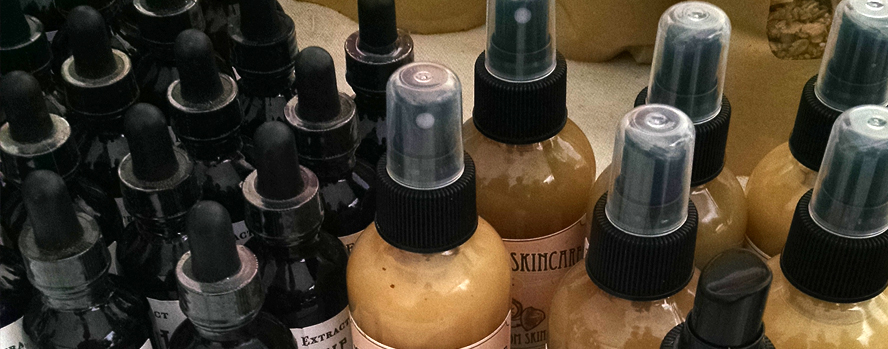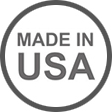Herbal Preparations - More ways to Take Herbs Than You Might Think

In the herbal world, there are quite a few ways you can administer traditional herbal medicines internally and externally. Most people are familiar with herbal teas, or infusions, and for more experienced herb users, maybe you have experience with liquid herbal extracts, or tinctures. But there is an entire array of options when it comes to deciding which method will work best for you and your family.
Preparation choice is dependent on what you are trying to achieve in your health goal and, also, which system you are trying to target. For instance, if you want to focus on respiratory health, Steam Inhalation of an herbal mix might be perfect for loosening and clearing congestion. If you have a sore throat, a Tea or Herbal Gargle might be best indicated. I've composed a quick list for you to expand your thinking about which methods are even possible.
1. Herbal Bath:
External Application, Entire Body/Systemic Treatment
Since ancient times, people have immersed themselves in warm baths full of botanicals, herbs, and mineral salts to cleanse, relax, refresh, rejuvenate, transform, and heal. Herbal bath infusions are not to be underestimated as purely something you do to 'pamper' yourself. By soaking in basically a huge herbal infusion, the body can be relieved from aches and pains, to improve circulation, to relax the mind and body, and even to fight colds through inhalation of volatile compounds from the herbs.
2. Capsule/Powder/Tablet:
Internal Use, Entire Body/Systemic Treatment
This is probably one of the most common methods used for ingesting herbs in the West. Herbal medicines are one type of dietary supplement sold in capsule form, as bulk powdered herb, or in pressed tablet form. Encapsulated herbs are typically dried herb, but it is possible to encapsulate fresh herbs at home.
3. Herbal Compress:
External Use, Specific Area Treatment
These applications are made by simply soaking a cloth in a strong herbal infusion, wringing it out mostly but not fully, and then laying it over the area needing attention. Compresses are often applied warm and can be used to help soothe injuries and inflammation and allow the body to focus on healing. They work by increasing blood circulation to the area or directing it away depending on the temperature used (hot vs. cold, remember what your mamma used to say!), while the addition of herbs can help to enhance these actions.
4. Essential oils:
External Use, Specific Area or Entire Body/Systemic Treatment
Essential oils enter the body primarily in two ways—applied to the skin or inhaled. Within each of these, there are many different kinds of application methods. For example, you can apply essential oils topically using compresses, sprays, baths, or massaging them into the skin.
5. Herbal Gargle:
External Use, Specific Area Treatment (Mouth, Gum, Throat)
Use can use a gargle of herbal infusions to help reduce swelling and keep the throat clean. Many herbs have anti-inflammatory and antibacterial properties to help soothe a sore throat. There are a handful, like marshmellow leaf for instance, that also has moistening, or demulcent, properties to directly bring soothing to the oral mucosa.
6. Honey:
Internal or External Use, Specific Area or Entire Body/Systemic Treatment
Honey is a powerful, natural remedy for both internal and external use. When you have a sore throat or a cough, honey is one of the best natural remedies, which can also be combined with herbs to further potentiate healing. The thick coating nature of honey makes for a soothing syrup.
It can be quite healing to the skin as well. There has been a lot of study in recent years on using honey as a salve to aid in sealing and disinfecting wounds, burns, and promote granulation tissue. Honey can also be used in gastrointestional afflictions to help balance acidity and promote the release of digestive enzymes.
7. Neti pot:
Internal Use, Specific Area Treatment
Neti Pot Rinses are great for upper respiratory discomfort – they can be even more amazing when they combined with the power of herbs (for example antimircrobial rosemary)! Neti pots, also called “nasal lavage,” are small tea-pot-like containers that are filled with warm water and some salt. You apply the rise by holding back your head, put the spout in your nostril, breathe through your mouth, and let the water flow through your sinuses – through one nostril, and then out the other. This is great to target inflamed, stuffy sinuses, allergies, plugged ears, and tickling coughs.
8. Steam inhalation:
Internal Use, Specific Area Treatment
With steam inhalation, some of the plant’s healing constituents volatiles into the air (think essential oils) to be then breathed in. Steam was used traditionally to help relieve congestion, loosen muscles, and relax the mind and soul. Eucalyptus, rosemary, thyme, peppermint, and lavender are popular herbs to steam when trying to relieve upper and lower respiratory symptoms.
9.Tea:
Internal Use, Entire Body/Systemic Treatment
Fresh or dried herbs are used in herbal tea infusions. A good rule of thumb is, when possible, use fresh herbs, but when not, use high quality dried herbs. In terms of how much herb to use most agree on proportions: 1 teaspoon of dried herb or 2 tablespoons of fresh herb to one cup of water, but know that this is a mostly arbitrary guideline. How much herb you personally decide to use depends on the particular flavor and quality of the herb being used.
Along with the quality and flavor of herbs, the length of time you brew the herbs will have an effect on the resulting flavor and medicinal potency. What the basic rule is:
Flowers and leaves of plants are generally steeped, or infused, in water (water is poured over the herbs) and allow to infuse for 10 – 30 minutes.
Roots and barks and more woody plant parts are usually simmered, or decocted, (at a low boil) for 15 – 30 minutes. The longer you let the herb steep or simmer in the water, the stronger the resulting taste will be.
10.Tincture:
Internal Use, Entire Body/Systemic Treatment
A tincture is a concentrated liquid extract form of an herb. Tinctures preserve and concentrate the properties of the herb, making them more effective and longer lasting. Tinctures work faster than other forms by removing phytochemicals out of their cellular and structural plant matrices and making them available for immediate absorption. The liquid format is able to partially bypass the digestive process. Your body can begin absorbing liquid extractives as soon as they reach the mucous membranes in your mouth, stomach and small intestine.

Kimberly Jean, BSN, MA
Herbalist and Educator, Perfect Supplements
Kimberly holds a Bachelor's of Science in Nursing and a Master's of Arts in Education Research and Administration. She currently sits on the Editorial Review Board for the Journal of the American Herbalists Guild. Kimberly has studied directly under Alexis Durham lead herbalist at Herb Pharm, Sajah Popham of Organic Unity spagyrics, Pearl Sites and Tyler Wauters of Hawthorn Institute, amongst many others. Kim, in recent years, started and directed several large scale commercial herbal apothecaries for community retailers on both the West and East coast, with close working knowledge of over 300+ botanicals.
...
As always, the information in this section is intended for educational purposes only and is not a substitute for the advice of a qualified healthcare professional. Herbs can have interactions with medications and other natural products. If you consider taking an herb, I encourage you to read up on it before you begin consuming it, its extract, or essential oil.In addition if you are pregnant or nursing, you have to be very careful as to which herbs you can safely take. As an herbalist, I am sharing this information as a starting point, if you do decide to take action, please consult with a qualified healthcare professional who is familiar with your unique and specific situation.











